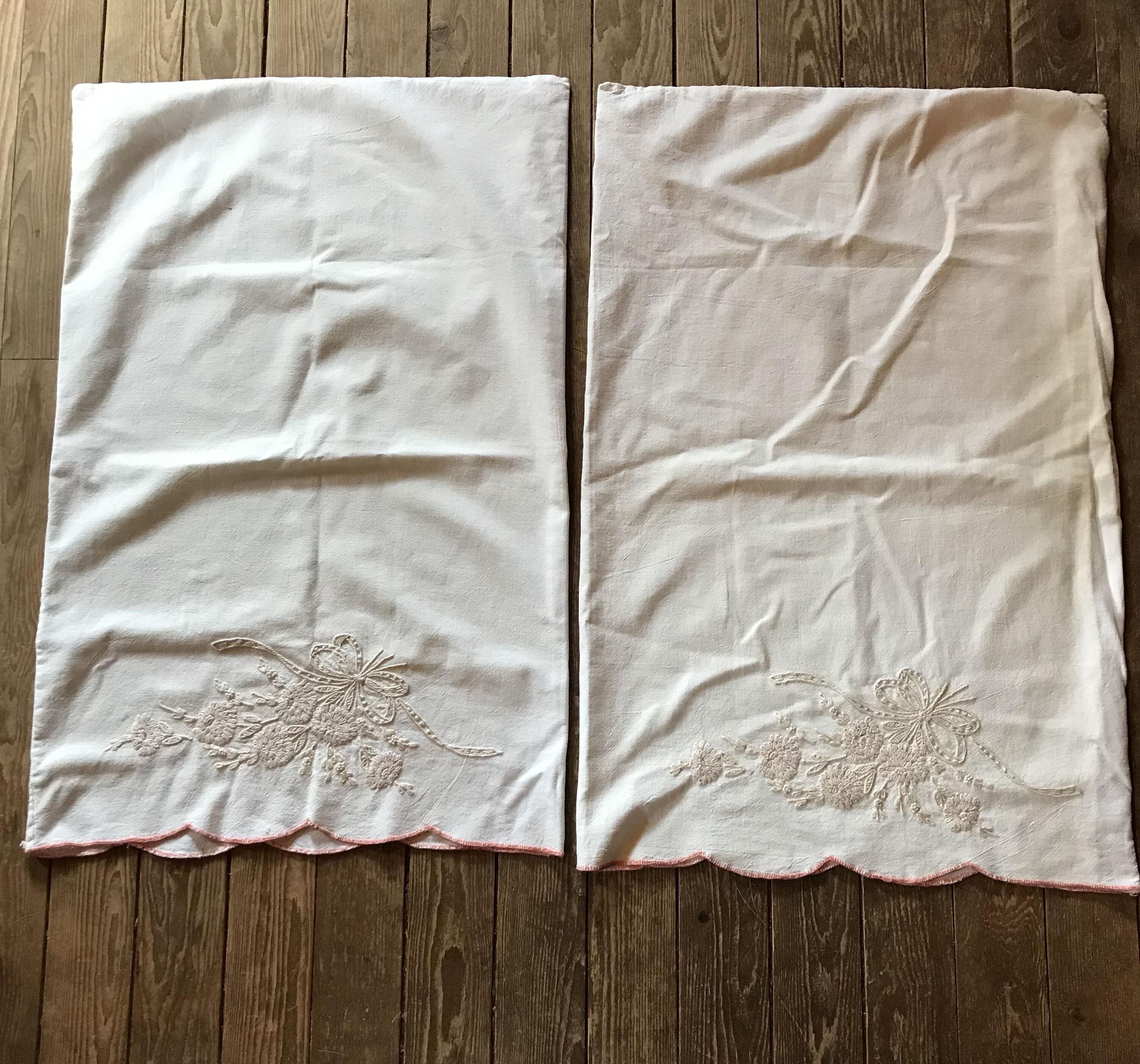Name/Title
Pillow CasesEntry/Object ID
2004.07.01a-bDescription
Flour sack pillow case with embroidery.
History: Flour Sack Pillow Cases - Relics of earlier times.
By Eveline Jackson Flint
From the 1920s through the 1940s, cash was scarce and nothing was wasted. Old stockings were braided into rugs or used to tie up plants. Worn out coats lined sleighs or trunks and protected against drafts. Stale cakes was freshened with custard topping or trifle. Labels from jars and boxes were used as notepaper, and the boxes themselves served many purposes.
Sturdy, empty orange crates were sometimes made into dressing tables. Two double crates were painted white, with kneehole spaces left between the crates. The top was also painted, and a pretty inexpensive ruffle was added as a skirt, hiding the compartments. A mirror, framed with a ruffle from the same material, usually hung above the dresser.
When we were young, a dollhouse was made from the girls in our family by joining two double crates to form four rooms. There was linolium on the floors, papered walls and an assortment of home made and purchased doll furniture. We played with it for years.
The decorative impulse.
The determination and creative capacity of the women of those cash-strapped years to make family surroundings attractive with scant resources is to be admired. Such efforts were very labour intensive.
Examples can still be found
A pair of hand-stitched, sacking pillow cases, donated to the Heritage Park Museum by my sister Doreen Jackson Byng, is it represents. Purchased originally by my sister from the Mills Memorial Hospital Thrift Shop, the scalloped border is blanket-stitched in coral. Embroidery of the coral and yellow stencilled pattern of ribbons and chrysanthemums had been completed on one 28 by 18 inch pillow case. French knots and back stitch were used for the ecru-coloured ribbon; the half a dozen mums are overlaid with a looping stitch.
The embroidery was only partly complete on the second pillow case. It is tempting to speculate about why the original needle woman stopped the project. Did she run out of thread? Did a tragedy occur?
My sister who learned to embroider during a lengthy childhood illness enjoyed completing the unfinished work and donated the items to the museums as a link to Terrace's past.Acquisition
Accession
2004.07Source or Donor
Doreen ByngAcquisition Method
GiftCreated By
Meghan LeschertCreate Date
January 22, 2009Updated By
Emily AndrewsUpdate Date
August 5, 2020
